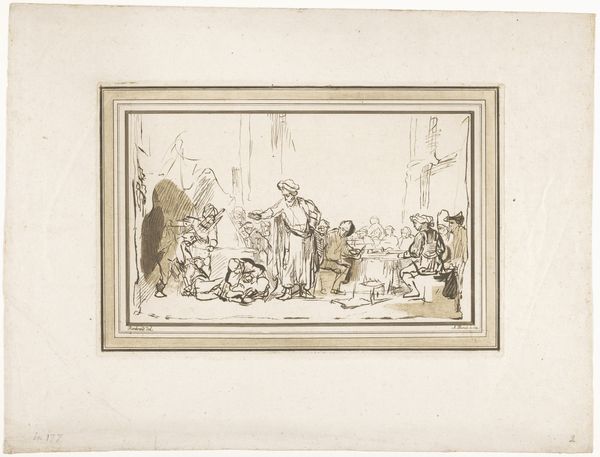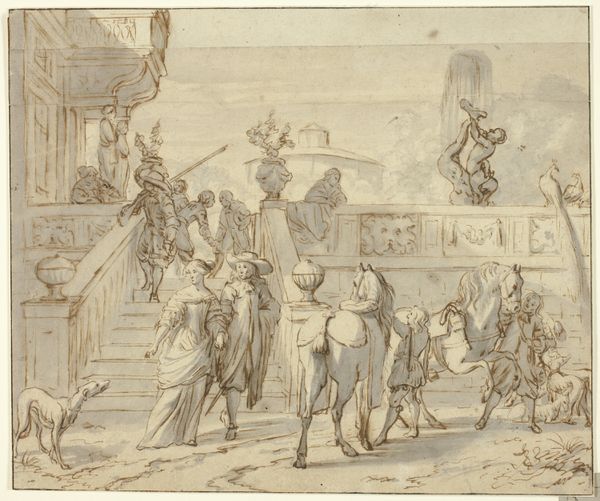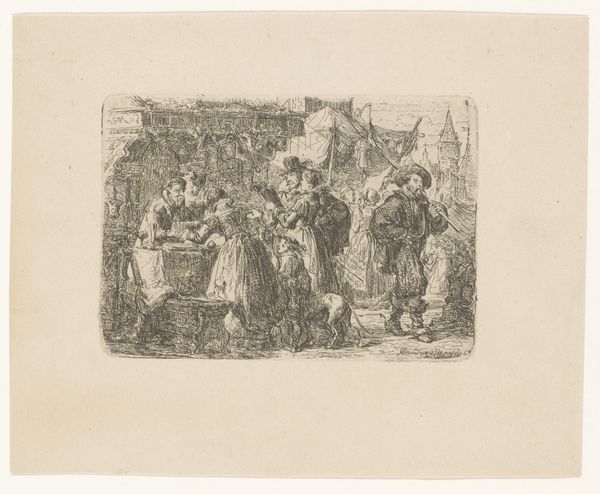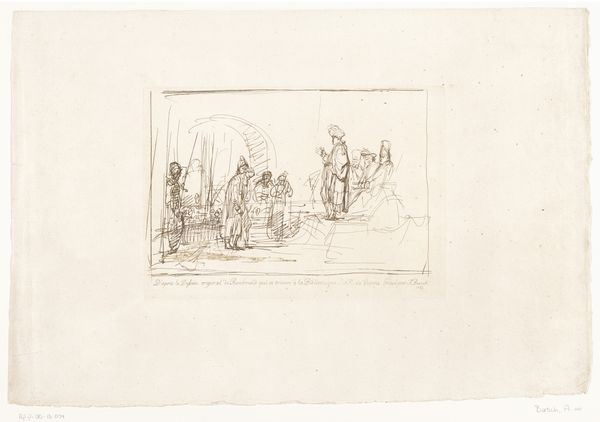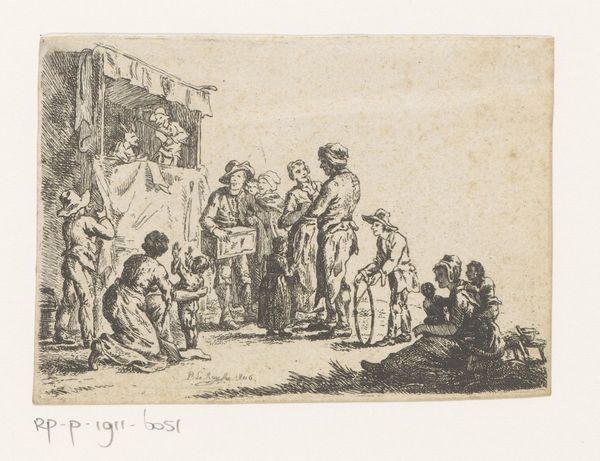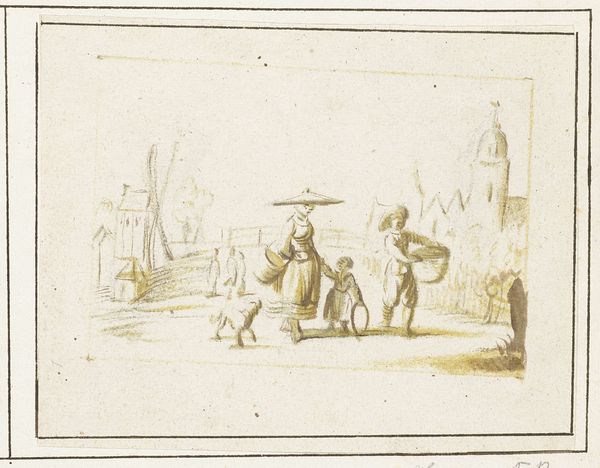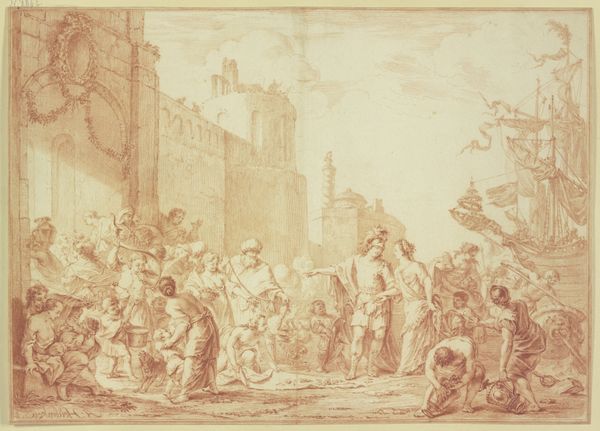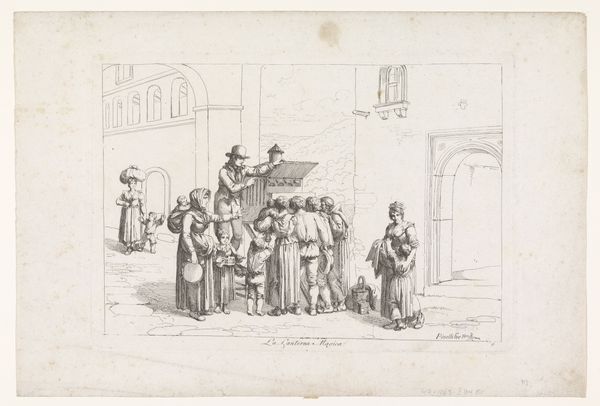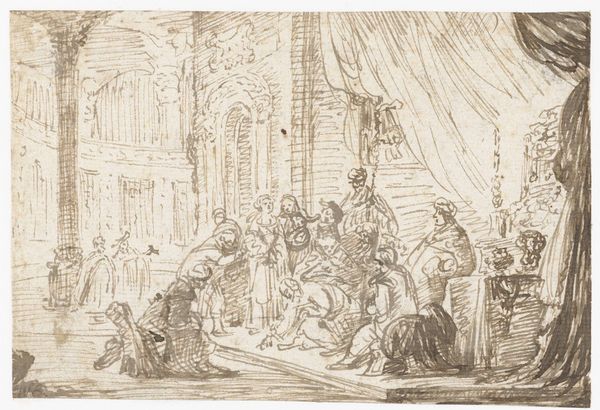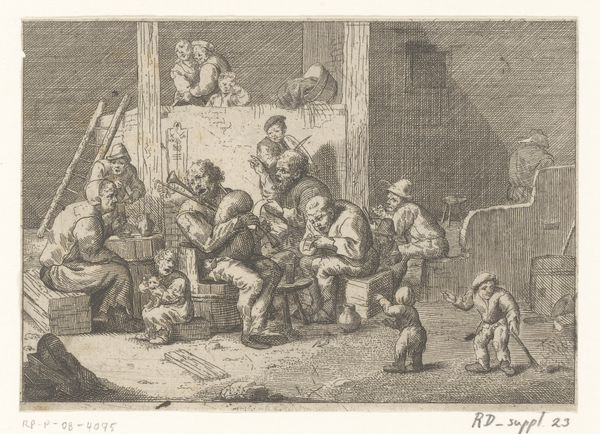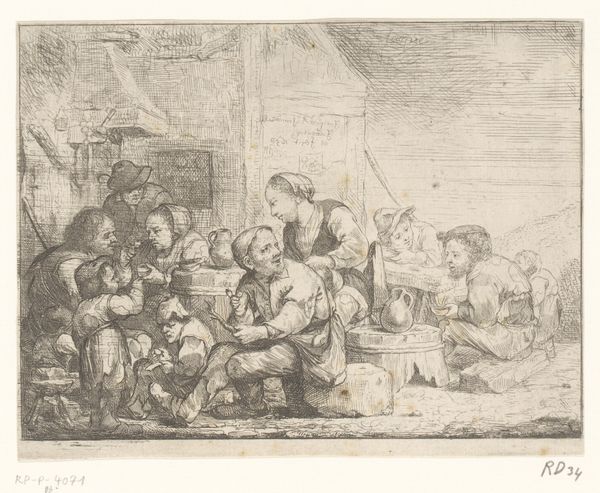
Dansende beer met begeleider voor een herberg, op de voorgrond ook een aap 1806
0:00
0:00
drawing, print, etching
#
drawing
#
16_19th-century
#
narrative-art
# print
#
etching
#
etching
#
genre-painting
Dimensions: height 152 mm, width 192 mm
Copyright: Rijks Museum: Open Domain
Editor: Here we have "Dancing Bear with Handler in Front of an Inn, also a Monkey in the Foreground," an etching by Pierre Jean Baptiste Leroy from 1806. The scene feels both charming and unsettling at the same time; a group of people watches a dancing bear with what looks like amusement, or perhaps something else? How do you interpret this work, especially within its historical context? Curator: It's fascinating, isn't it? Leroy captures a very specific intersection of popular entertainment and social dynamics. Bear-baiting and performing animals were common public spectacles. The fact that Leroy situates this performance outside an inn suggests it was a common element of the social life and commerce in early 19th-century Europe. It highlights the socio-economic realities of the time, right? Where did those practices occur, and who participated in them? Editor: Right, it really makes you consider who is enjoying this and who isn't. What about the presence of the monkey; does that speak to social attitudes of the era? Curator: Absolutely. The monkey is not simply a charming detail. These animals were often props in a performance of domination. In placing the monkey alongside the bear, the artwork reflects not only animal exploitation, but raises questions about the broader culture of inequality, visible within this form of entertainment. Consider how visual culture at the time contributed to hierarchies and normalization of power. Does the fact that this is a print -- reproducible, easily distributed -- affect your understanding of it? Editor: It's unsettling to think that such scenes were considered entertainment, and that the image could spread to an even wider audience through printmaking. It highlights how desensitized people were to animal suffering at the time. Thanks for opening my eyes to this darker side. Curator: Indeed. It shows how art isn’t always beautiful; it can reveal uncomfortable truths about the past, challenging us to confront and learn from them. A single artwork holds up a mirror to its social landscape.
Comments
No comments
Be the first to comment and join the conversation on the ultimate creative platform.
